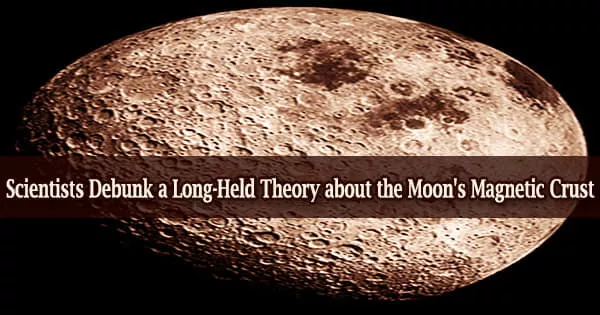New multinational research on the Moon has revealed new information about how and why the Moon’s crust is magnetized, thus ‘debunking’ one of the prior long-held hypotheses. In comparison to the Earth, the Moon’s magnetic field is quite feeble.
The main distinction is that the Moon currently lacks a dipolar magnetic field (as would be formed by a geodynamo in its core), hence the magnetization is variable and its origin is nearly completely crustal in nature, making comparisons to Earth problematic.
Dr. Katarina Miljkovic of the Curtin Space Science and Technology Centre, which is part of Curtin University’s School of Earth and Planetary Sciences, highlighted how the new research, which was published in Science Advances, builds on decades of work by other scientists.
“There are two long term hypotheses associated with why the Moon’s crust might be magnetic: One is that the magnetization is the result of an ancient dynamo in the lunar core, and the other is that it’s the result of an amplification of the interplanetary magnetic field, created by meteoroid impacts,” Dr. Miljkovic said.
“Our research is a deep numerical study that challenges that second theory the impact-related magnetization and it essentially ‘debunks’ it. We found that meteoroid impact plasmas interact much more weakly with the Moon compared to the magnetization levels got from the lunar crust. This finding leads us to conclude that a core dynamo is the only plausible source of the magnetization of the Moon’s crust.”
There are two long term hypotheses associated with why the Moon’s crust might be magnetic: One is that the magnetization is the result of an ancient dynamo in the lunar core, and the other is that it’s the result of an amplification of the interplanetary magnetic field, created by meteoroid impacts.
Dr. Katarina Miljkovic
Dr. Miljkovic provided the researchers with numerical estimations of the vapor formation that happened during a major meteoroid impact bombardment on the Moon roughly 4 billion years ago in order to carry out her part of the research.
“When we look at the Moon with the naked eye, we can see these large craters caused by ancient meteoroid impacts. They are now filled with volcanic maria, or seas, causing them to look darker on the surface,” Dr. Miljkovic said. “During these impact events, the meteoroids hit the Moon at a very high speed, causing displacement, melting, and vaporization of the lunar crust.”
“My work calculated the mass and thermal energy of the vapor emitted during these impacts. That was then used as input for further calculations and investigation of the behavior of the ambient magnetic field at the Moon, following these large impact events. Basically, we made a much more inclusive, high fidelity and high-resolution investigation that led to debunking of the older hypothesis.”
Dr. Rona Oran, the study’s lead researcher and a research scientist in the Massachusetts Institute of Technology’s (MIT) Department of Earth, Atmospheric, and Planetary Sciences (EAPS), said the impact simulations, combined with plasma simulations, harness the latest developments in scientific codes and computing power, allowing the team to perform the first simulations that could realistically capture and test this long-proposed mechanism.
Using such techniques allowed the scientists to examine a variety of scenarios, allowing them to rule out this process under any plausible conditions that may have prevailed during the impact.
This rebuttal could have significant ramifications for determining what magnetized the Moon, as well as other solar system objects with unexplained magnetized crusts. It’s feasible that during massive impact events on an airless world like the Moon, transitory magnetic fields could be formed.
“In addition to the Moon, Mercury, some meteorites, and other small planetary bodies all have a magnetic crust. Perhaps other equivalent mechanical dynamo mechanisms, such as those we now believe to have been in operation on the Moon, could have been in effect on these objects as well,” Dr. Oran said.





